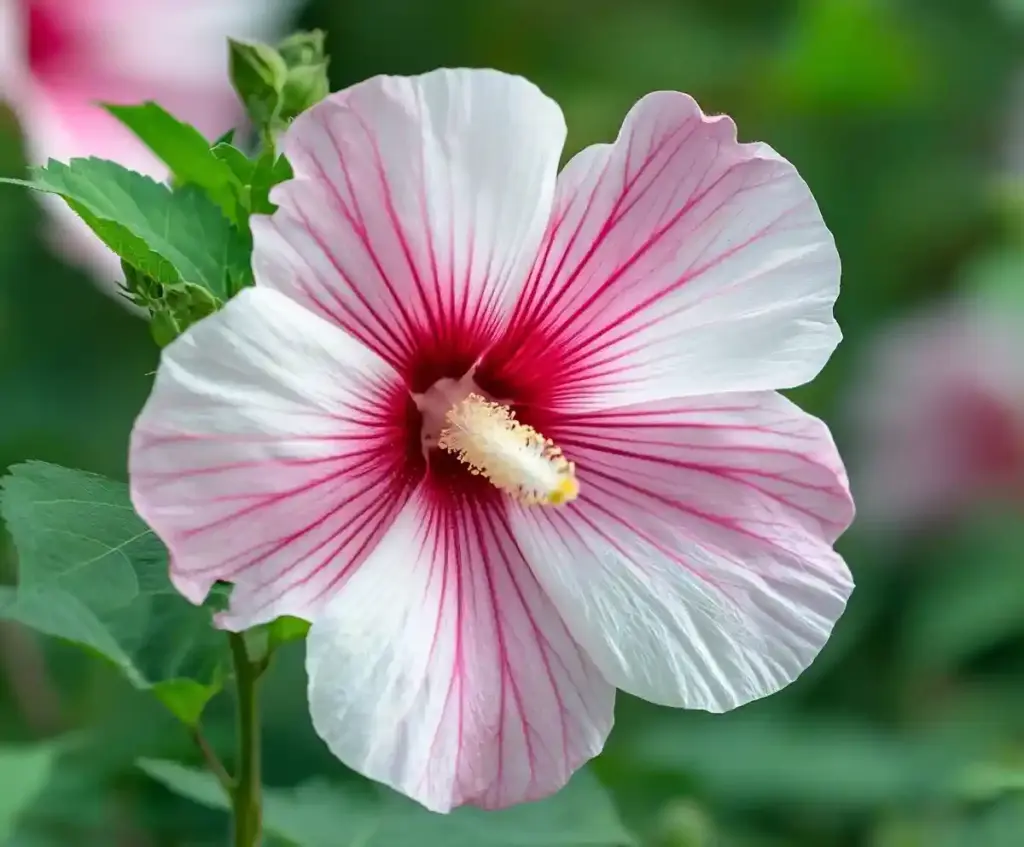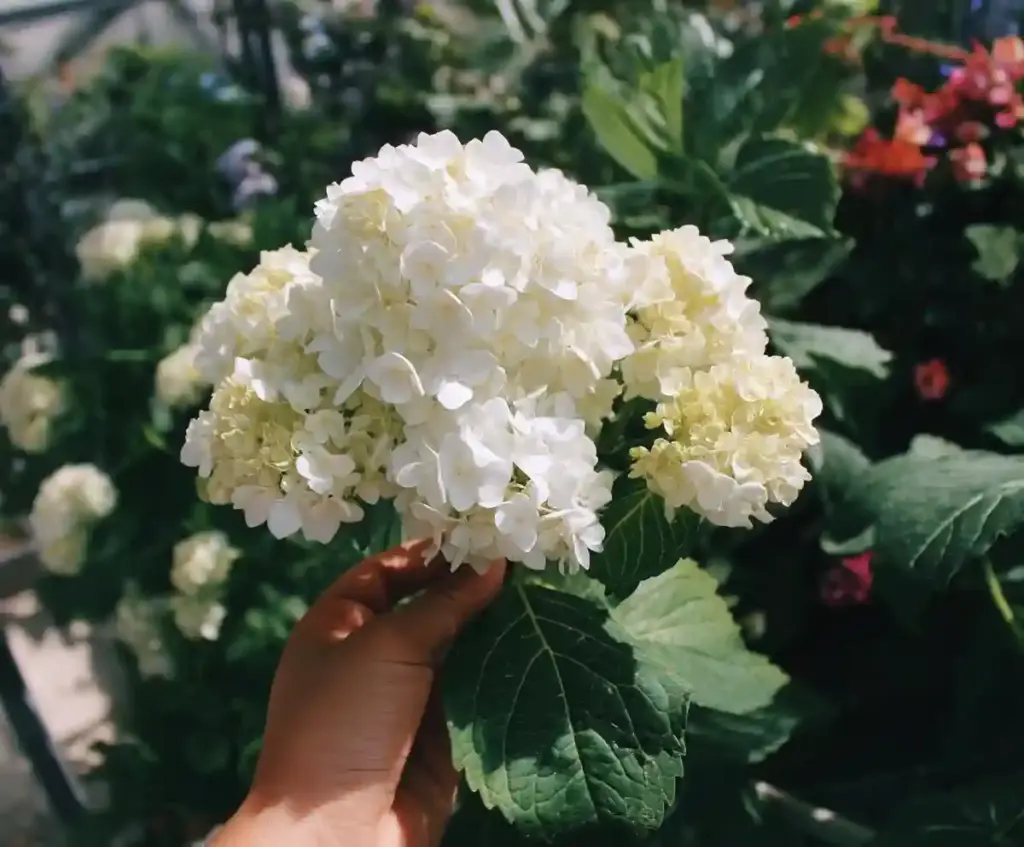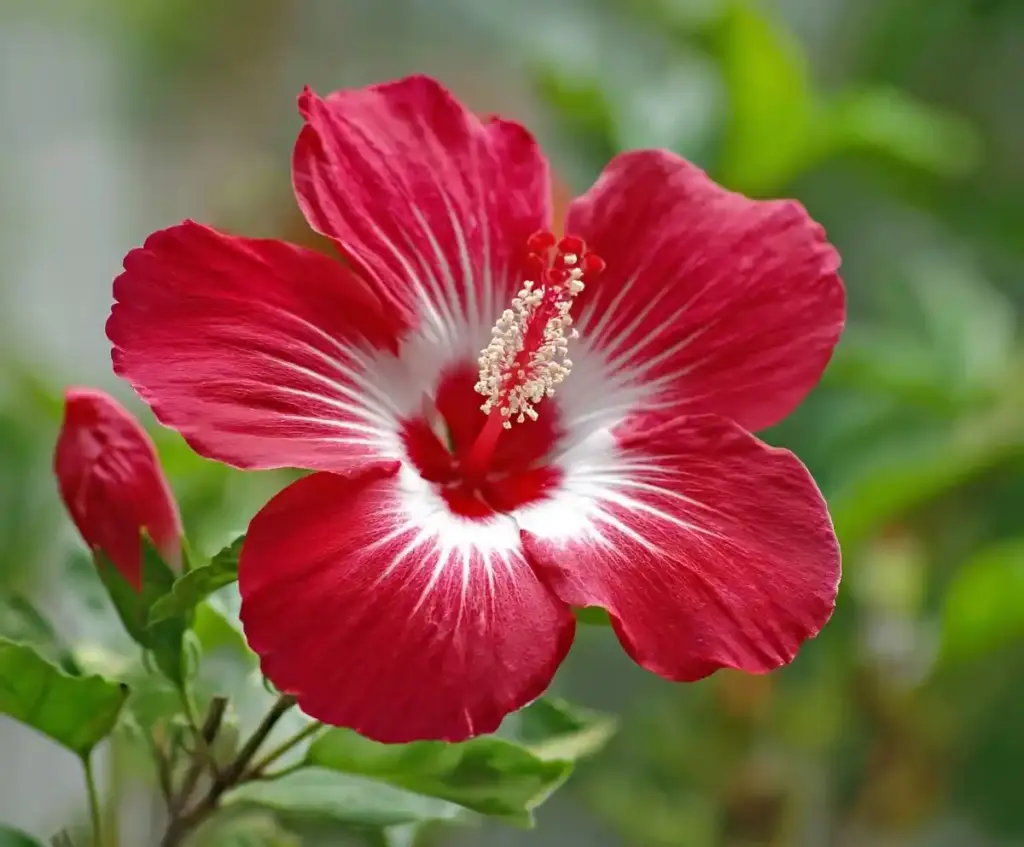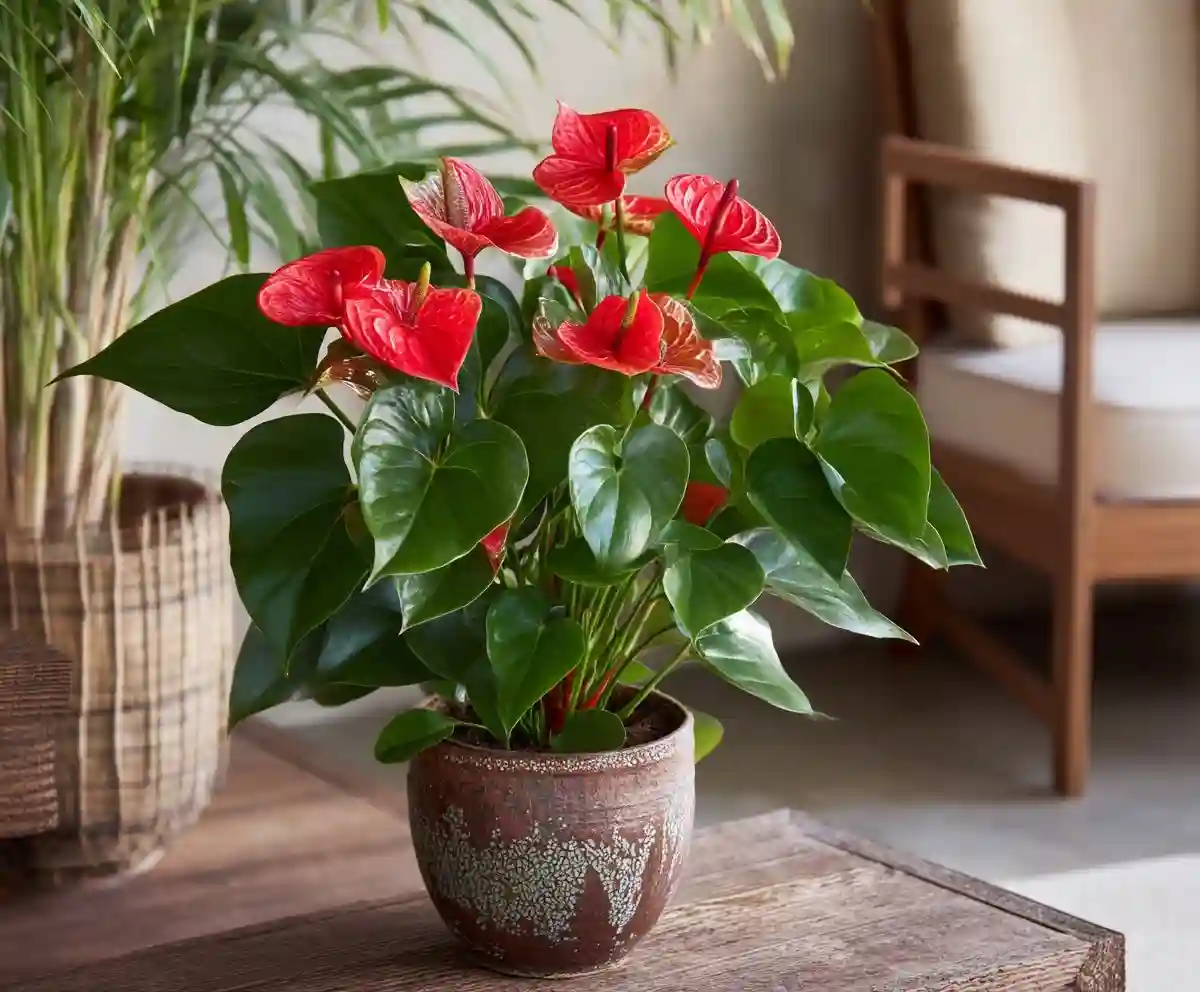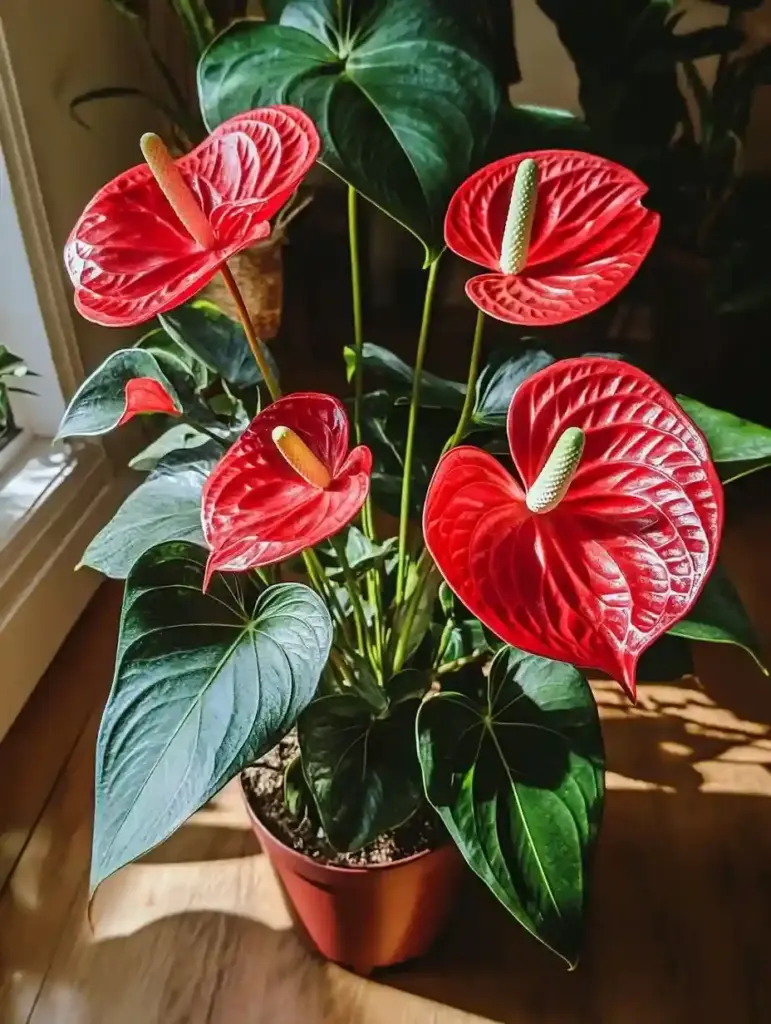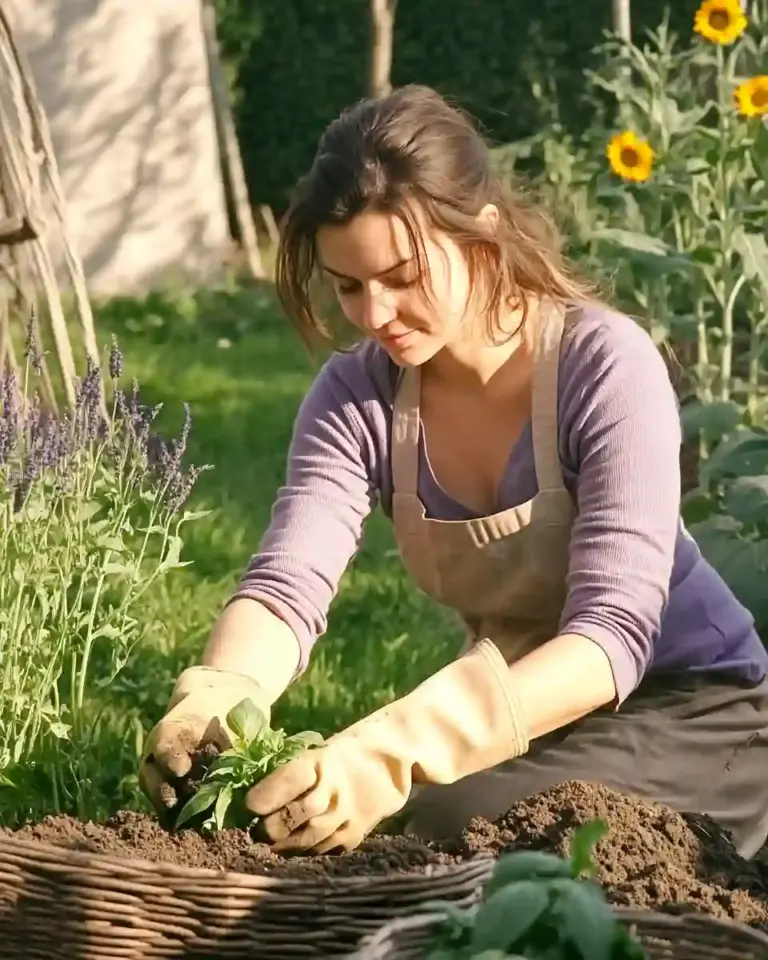Anthurium care doesn’t have to be complicated. In fact, once you understand a few simple basics, this stunning tropical plant can thrive indoors with minimal fuss. Known for its glossy heart-shaped leaves and long-lasting blooms, the anthurium—often called the Flamingo Flower or Flamingo Lily—is a favorite among indoor plant lovers for good reason. Whether you’re a seasoned plant parent or just getting started, learning how to care for anthuriums properly will reward you with vibrant color and lush foliage all year long.
In this guide, we’ll walk you through everything you need to know to keep your Flamingo Plant healthy and blooming beautifully.
Table of Contents
About the Flamingo Lily Plant
The Flamingo Lily, more commonly known by its botanical name Anthurium andraeanum, is a tropical plant native to Central and South America. It’s prized for its striking, waxy “flowers,” which are actually colorful spathes surrounding a central spadix. These bright, heart-shaped blooms come in shades of red, pink, white, and even purple—instantly adding bold color to any indoor space.
What makes the anthurium especially appealing is its ability to flower year-round under the right conditions. As a member of the Araceae family, it enjoys warm temperatures, consistent humidity, and well-drained soil—features that mimic its natural rainforest habitat. Because of its elegant appearance and forgiving nature, the Flamingo Lily has become a beloved houseplant in homes and offices worldwide.
Why We Love Flamingo Flower
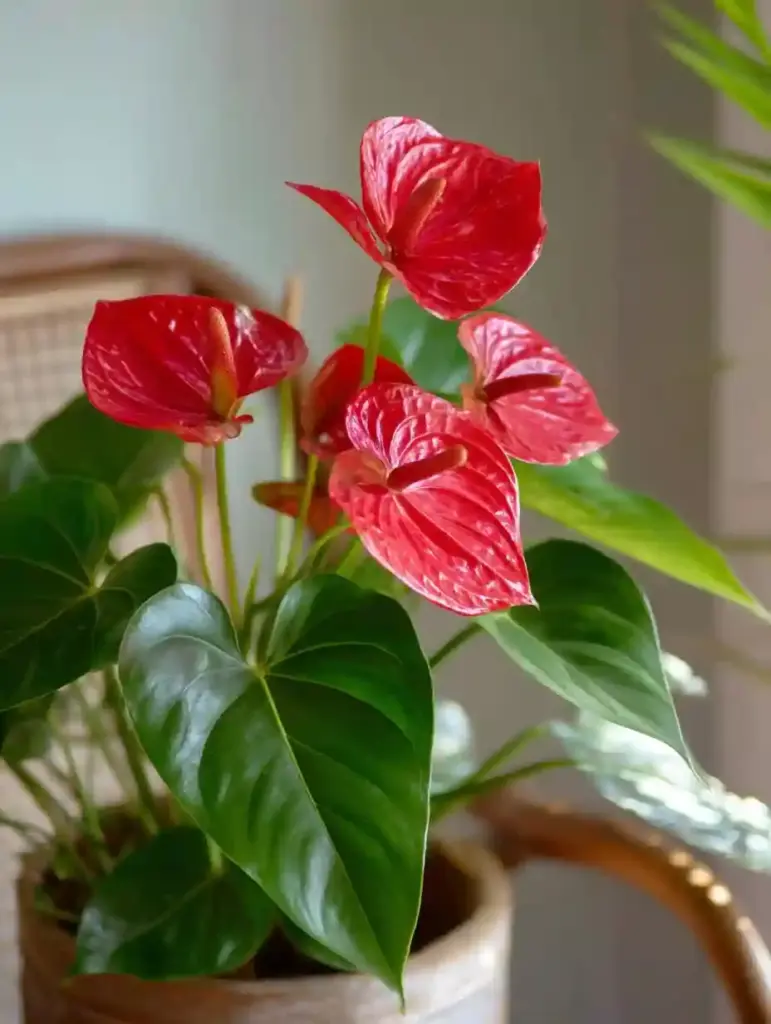
There’s a lot to admire about the Flamingo Flower beyond its vibrant looks. One of the top reasons people fall in love with this plant is its long-lasting blooms. Each flower-like spathe can last for weeks—sometimes even months—making it one of the most rewarding flowering houseplants to grow.
But beauty isn’t its only strong suit. Anthuriums are also low-maintenance, making them a great choice for both beginners and busy plant owners. As long as you provide them with bright, indirect light and a bit of humidity, they’ll continue to thrive with minimal effort.
Here’s why we can’t get enough of this tropical stunner:
- Vibrant, exotic appearance that instantly elevates indoor décor
- Air-purifying properties that help remove harmful toxins
- Resilience to changes in environment or brief periods of neglect
- Compact growth habit that fits well on desks, shelves, or windowsills
- Year-round flowering potential with proper anthurium care
It’s this combination of beauty, toughness, and simplicity that keeps the Flamingo Flower at the top of our houseplant list.
Anthurium Care Made Easy
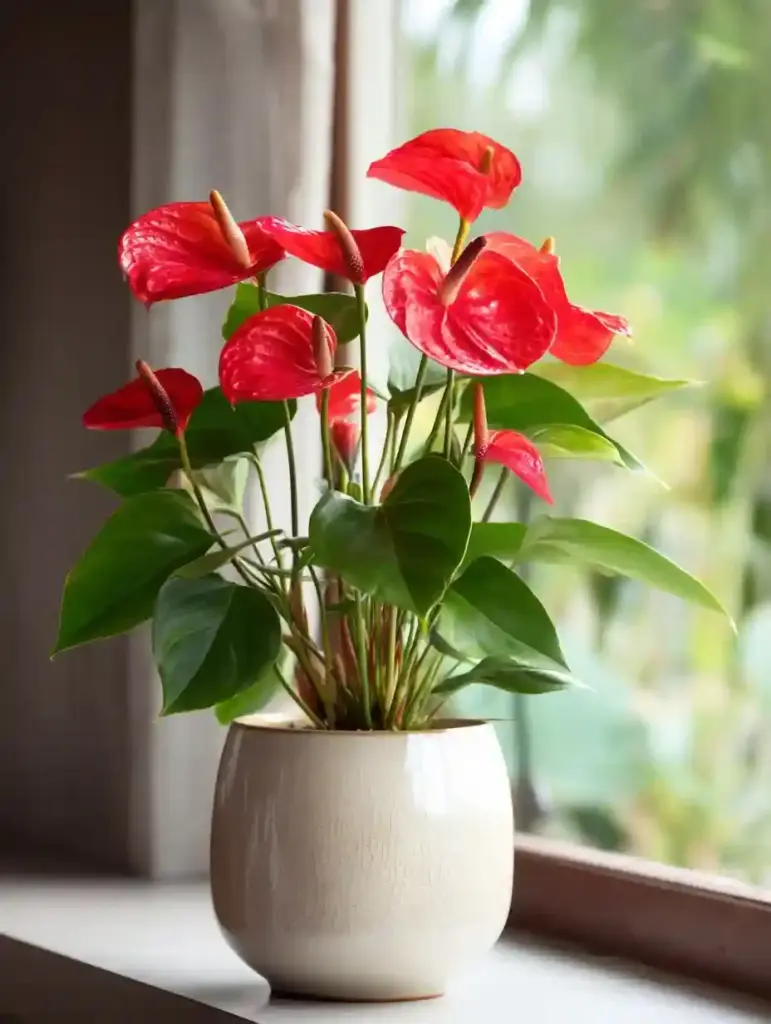
Mastering anthurium care is all about creating the right indoor environment—one that mimics the plant’s tropical roots. The good news? With a few simple habits, your Flamingo Plant will flourish year-round.
Light Requirements
Anthuriums love bright, indirect light. Place them near a window with filtered sun or behind sheer curtains. Avoid direct sunlight, which can scorch the leaves, and don’t tuck them into low-light corners—this can lead to fewer flowers and leggy growth.
Soil Preferences
Use a light, well-draining potting mix rich in organic matter. A blend of peat moss, perlite, orchid bark, and potting soil works well. This prevents root rot while holding just enough moisture.
Watering Routine
Water when the top 1–2 inches of soil feel dry. Always check the soil before watering to avoid overwatering—anthuriums hate soggy roots. Use room-temperature water and allow excess to drain completely.
Humidity & Temperature
These tropical beauties prefer 60–80°F and enjoy high humidity. Place your plant near a humidifier, on a pebble tray, or group it with other houseplants to increase moisture in the air. Avoid cold drafts, heaters, or sudden temperature swings.
Fertilizing
Feed your anthurium every 6–8 weeks during the growing season (spring and summer) using a balanced liquid fertilizer at half strength. Too much fertilizer can harm the roots, so always follow label directions.
When you meet these basic needs, you’ll be rewarded with glossy leaves and rich blooms that last for weeks.
Flamingo Plant Common Pests and Diseases

Even with proper anthurium care, your Flamingo Plant may occasionally face pest or disease problems. The key is early detection and swift action.
Common Pests
- Spider Mites – These tiny pests create fine webs and cause yellow or stippled leaves. Boost humidity and wipe leaves with a damp cloth to deter them.
- Mealybugs – White, cottony clusters that suck plant sap. Remove manually with a cotton swab dipped in rubbing alcohol.
- Aphids – Small insects found on new growth, leading to curled or misshapen leaves. A strong spray of water or insecticidal soap usually does the trick.
Common Diseases
- Root Rot – Caused by overwatering or poorly drained soil. Affected roots will appear mushy and black. Always use well-draining soil and allow the pot to drain fully.
- Bacterial Blight – Look for water-soaked spots on leaves. Remove infected parts and avoid overhead watering.
- Fungal Leaf Spot (Anthracnose) – Brown or black spots may appear due to poor airflow or excess moisture. Prune damaged leaves and ensure good ventilation.
Prevention Tips
- Inspect plants regularly for signs of trouble
- Use sterile tools when pruning or propagating
- Avoid overcrowding to maintain air circulation
- Keep leaves dry during watering to reduce fungal risk
A healthy, stress-free plant is far less likely to attract pests or succumb to disease. Stay observant, and your Flamingo Flower will continue to thrive.
Propagating Your Anthurium
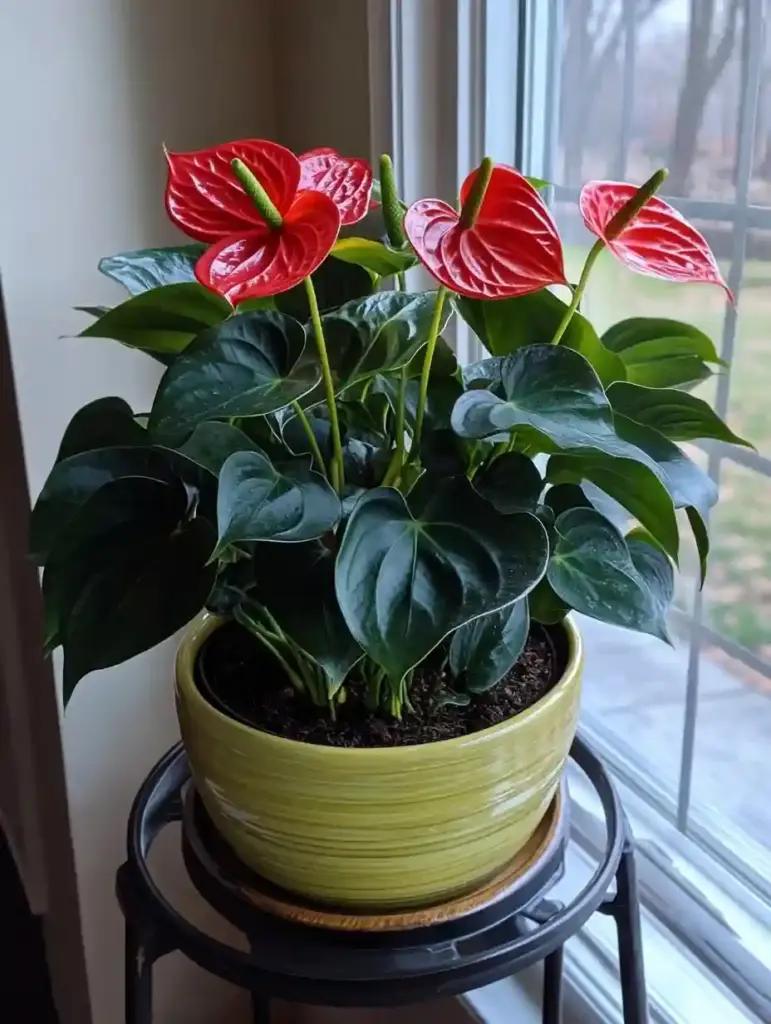
Want more Flamingo Plants without spending extra at the nursery? With the right techniques, anthurium care includes simple propagation methods you can do at home. Whether you’re expanding your collection or gifting a plant to a friend, propagation is a fun and rewarding process.
1. Stem Cuttings
The most common and beginner-friendly way to propagate anthuriums is through stem cuttings.
- Choose a healthy stem with at least one visible node and a few leaves.
- Use a clean, sharp knife or scissors to cut below the node.
- Place the cutting in water or directly into moist potting mix.
- If using water, change it every few days. Roots should form in 2–4 weeks.
- If planting in soil, keep humidity high and soil lightly moist until rooted.
2. Division
For mature plants with multiple crowns or stems:
- Carefully remove the plant from its pot.
- Gently separate the root ball into sections, ensuring each piece has roots and foliage.
- Replant each division into its own container using fresh, well-draining soil.
3. Seeds (Advanced Method)
While growing anthuriums from seed is possible, it’s slow and best left to advanced hobbyists. Germination can take weeks, and blooming may take a year or more.
Tips for Success
- Use sterilized tools to prevent infections.
- Maintain warmth and humidity—ideally above 65°F and 60% humidity.
- Be patient. New growth may take time, but healthy roots will eventually form.
Anthurium Care: How to Repot an Anthurium
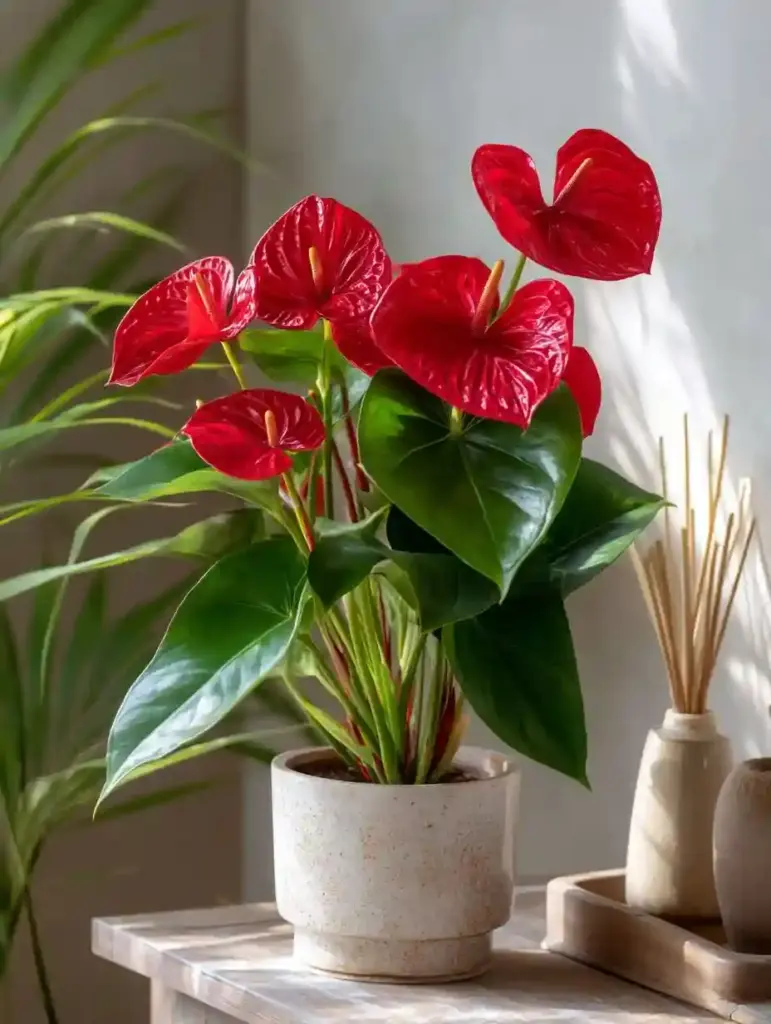
Repotting is a vital part of anthurium care, especially if your plant has outgrown its container or the soil has become compacted. Typically, repotting every 1–2 years keeps your Flamingo Plant healthy and encourages fresh growth and blooming.
When to Repot
- Roots are growing out of the drainage holes
- Water runs straight through the pot without soaking the soil
- Soil looks compacted or breaks down easily
- Growth has slowed despite proper care
Step-by-Step Repotting Guide
- Choose the Right Pot
Select a container 1–2 inches wider than the current one. Make sure it has drainage holes to prevent water buildup. - Prepare the Soil
Use a chunky, well-draining mix like one made of peat moss, orchid bark, perlite, and quality potting soil. - Remove the Plant Carefully
Gently ease the anthurium out of its pot. Loosen the roots if they’re tightly bound. - Trim and Check the Roots
Remove any dead, mushy, or overly long roots. Healthy roots should be firm and white. - Replant in Fresh Soil
Center the plant in the new pot and fill around it with your soil mix, leaving about an inch below the rim for watering space. - Water Lightly
Water thoroughly to settle the soil but avoid soaking it. Keep the plant in bright, indirect light while it adjusts.
Post-Repotting Care
Your plant may look a little tired for a week or two—that’s normal. Avoid fertilizing immediately, and don’t repot again unless absolutely necessary.
Anthurium Care FAQs
Even experienced plant parents sometimes have questions about anthurium care. Here are answers to some of the most common ones:
How Often Should I Water My Anthurium?
Water when the top 1–2 inches of soil feel dry to the touch. Stick your finger into the soil or use a moisture meter. Avoid watering on a fixed schedule—overwatering leads to root rot faster than underwatering.
What Does an Overwatered Anthurium Look Like?
Yellowing leaves, soft stems, and a musty smell are signs of overwatering. The soil may feel constantly soggy, and roots may appear brown or mushy. Let the plant dry out and consider repotting with fresh soil if needed.
Why Are the Leaf Tips Turning Brown?
Brown tips are often caused by low humidity, direct sunlight, or inconsistent watering. Move the plant to a spot with bright, indirect light and increase humidity around it. Use distilled water if mineral buildup is suspected.
Is the Anthurium Toxic to Pets?
Yes. Anthuriums contain calcium oxalate crystals, which can irritate the mouth, throat, and stomach if ingested by cats, dogs, or even small children. Keep out of reach of pets and children.
How Can I Get My Anthurium to Bloom Again?
Provide bright, indirect light, maintain warm temperatures and high humidity, and feed with a balanced fertilizer during the growing season. Consistent care is key—stress or poor conditions will delay blooming.
Final Thoughts About Growing Flamingo Flower
If you’re looking for a plant that’s both visually striking and surprisingly forgiving, the Flamingo Flower is a top pick. With consistent anthurium care, you’ll enjoy bold, waxy blooms and lush foliage nearly all year long—even if you don’t consider yourself a green thumb.
Its ability to bounce back from stress, tolerate a range of indoor conditions, and thrive with minimal fuss makes it a wonderful addition to any home. Whether you’re placing it on a bright windowsill, adding it to your tropical plant collection, or giving one as a gift, anthuriums bring lasting beauty and vibrant energy wherever they grow.
So go ahead—give this tropical charmer a place in your indoor garden. A little love goes a long way with the resilient, rewarding Flamingo Plant.
🌿 Love gardening inspiration? Follow me on Pinterest for bold plant ideas, tips, and seasonal color!
More Posts
